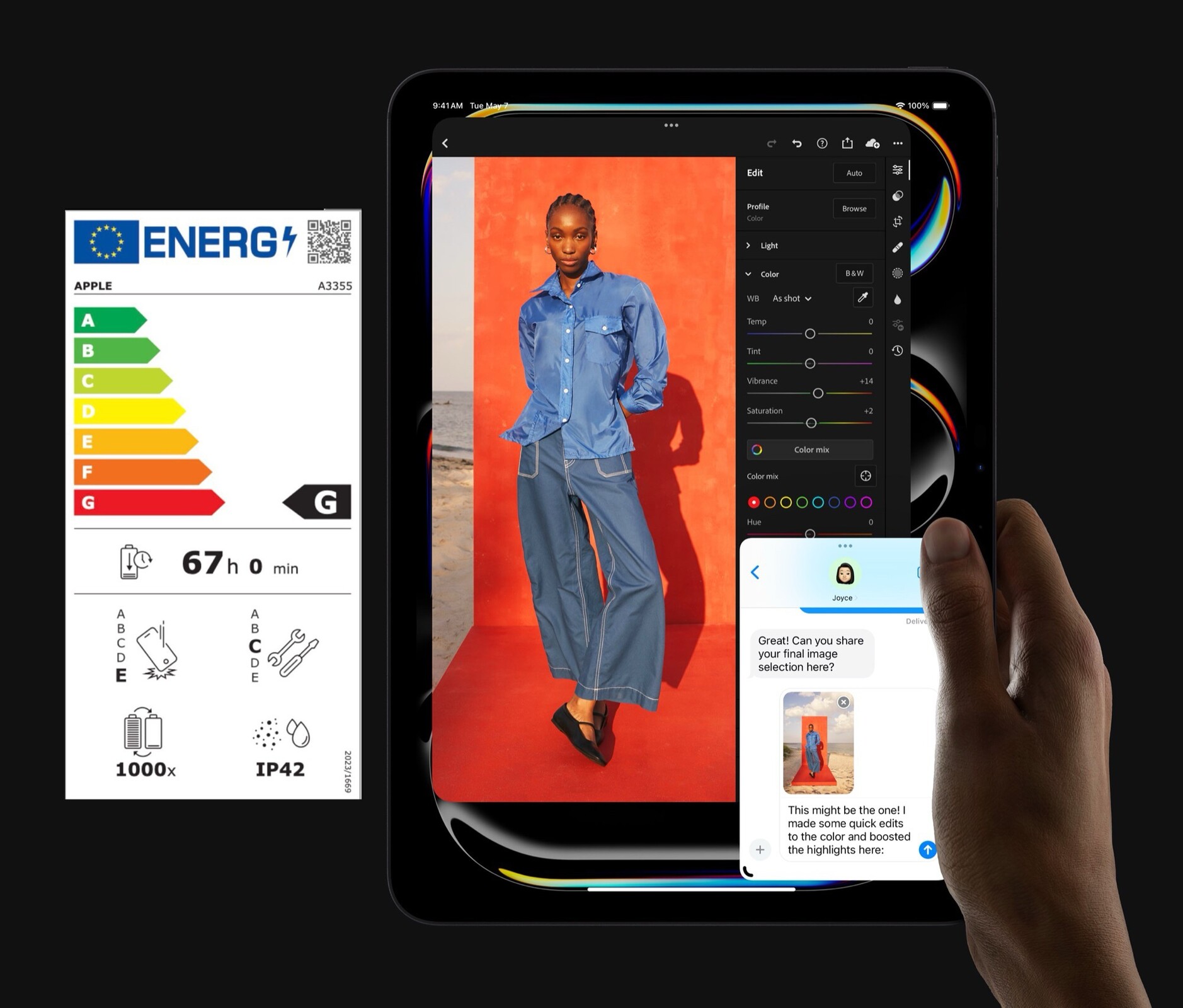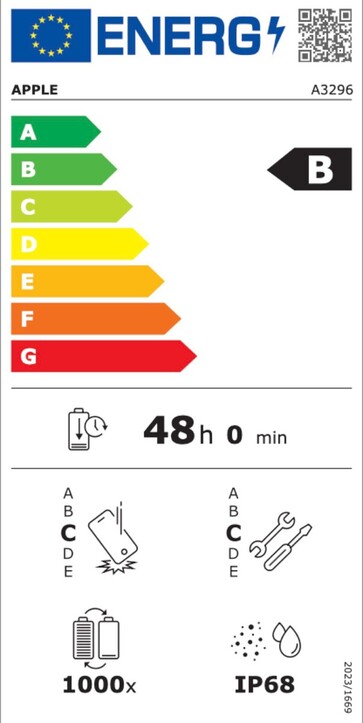After most Apple iPads, including the current iPad Pro M4, received the worst possible rating on the new EU energy label, Apple is criticizing the European Union. The criticism is justified in at least a few areas.

The Apple iPad Pro receives the worst rating from the new EU energy label. (Image source: Apple, edited)
Since June 20, all smartphones and tablets sold in the European Union have an energy label attached, which, similar to household appliances, must be displayed by all retailers and online shops. Aswe previously reported, energy labels have been issued for 603 smartphones and tablets so far, 142 of which have been awarded the highest possible rating of “A”. None of these top ratings went to Apple.
While the iPhone 16 Pro at least received a “B” rating, most iPad models only received a “G” rating – the worst rating stipulated by the EU. As the comparison of the labels between iPhone and iPad shows, the latter receives a significant deduction because it can barely survive drops and is not waterproof. The current iPad Pro gets a mediocre repairability rating of “C” – a fairly generous rating, as a look at the iFixit teardown reveals. There is also a deduction for the fact that Apple does not guarantee software updates.
>>>A2224 Battery for Apple iPad Pro 11 2nd Generation

So wird die Akkulaufzeit getestet, die auf dem EU-Energielabel ausgewiesen wird.
In response to the introduction of the EU Energy Label, Apple has published a44-page document explaining its own test methodology and criticizing the European Union’s specifications. According to Apple, the test results would have been sufficient to give the iPhone 16 Pro a better rating by one level in the areas of energy efficiency and drop resistance, but to account for ambiguities in the test specifications, Apple downgraded itself by one notch in each case.
This demonstrates one of the problems with the EU Energy Label: all tests are carried out by the product manufacturers themselves and are only checked by the EU in individual cases. Apple’s main criticism is that the specifications are sometimes vague and open to different interepretations, which in turn leads to different test methodologies and thus different ratings between manufacturers. This is not atypical for the EU, as these are only “preliminary” specifications that will be updated as soon as sufficient data and feedback from manufacturers is available.
Furthremore, Apple argues that some of the specifications are so vague that they barely make sense. For example, the rating of how well a product survives drops can be “overstated” by up to three levels depending on how the test parameters are interpreted. The EU requires a drop onto a steel plate, but does not provide any information on the degree of hardness or surface texture, which can influence the results significantly. Furthermore, only five drops are required, which, according to Apple, is too little for obtaining reliable results.
>>>A2043 Battery for Apple iPad Pro 12.9 3rd Generation






Source(s)
Apple |European Commission